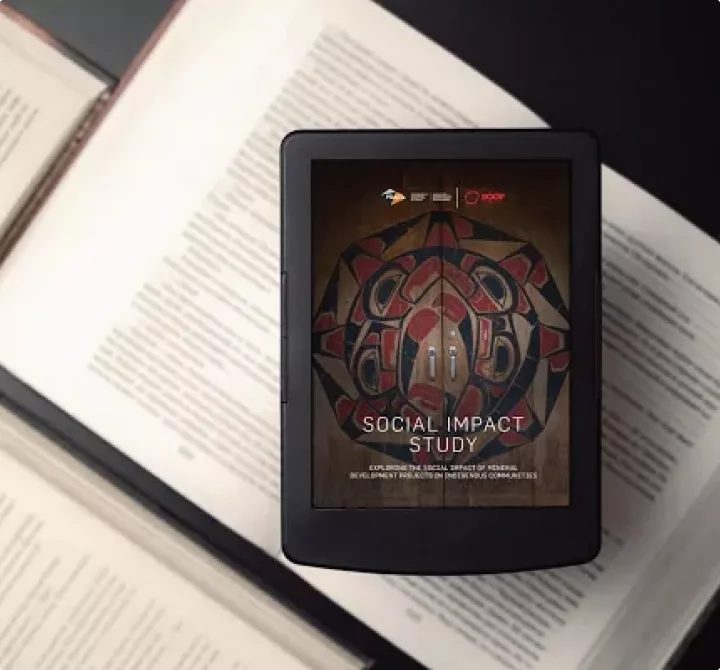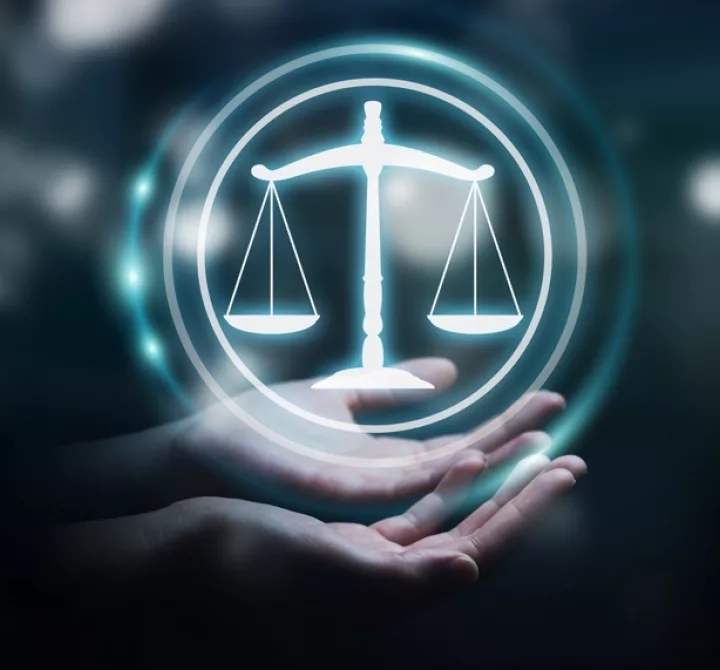

Social Responsibility
PDAC has long been an advocate for the industry to improve its social, environmental and health & safety performance both at home and abroad. We were the first industry association in the world to develop detailed guidance for companies on how to explore responsibly.
Social Responsibility in Exploration Toolkit
The excellence in Social Responsibility (ESR) e-toolkit helps promote Governance, Project Due Diligence, Community Engagement, Community Development, Ethical Conduct, Boundaries of Responsibility and Human Rights.
The ESR toolkit has been separated into sections which include an introductory description and a printable PDF file. See the left menu for a full list of sections within this toolkit.

Governance
Table of Contents
1.1 Corporate Governance and Responsible Governance
1.2 Why Are Responsible Governance and Sound Management Systems Important?
1.3 What Are the Elements of Responsible Governance?
1.4 Establishing a Management System To Support Your Commitments to e3 Plus
1.4.1 What Is a Management System?
1.5 Management Review
1.5.1 What Is a Management Review?
1.5.2 Recommended Practices
1.6 Grievance and Complaints Mechanisms
1.6.1 What Is a Grievance Procedure?
1.6.2 Recommended Practices
1.6.3 Other Considerations for Explorers
1.6.4 Sample Whistleblowing Procedure
1.6.5 Sample Community Complaints Procedure
1.7 Reporting Performance
1.7.1 Methods of Communicating Performance
1.7.2 Characteristics of Good Reporting
1.7.3 Getting Started
1.7.4 Sustainability or Social Responsibility Reports
1.7.5 Verification and Assurance of Performance Statements
1.7.6. Reporting Tables
1.8 Monitoring and Evaluation
1.8.1 What Is Monitoring, Evaluation and Verification?
1.8.2 What to Monitor and Evaluate?
1.8.3 How to Monitor and Evaluate Performance
1.8.4 Establishing Metrics Performance Indicators
Introduction
Governance is the process by which an organization charts and steers its course, to achieve its objectives and meet its commitments to its stakeholders. It is the process of defining the strategic decisions that shape the organization, the oversight and implementation of those decisions and ultimately assuming accountability for the outcomes. Governance is about making responsible decisions. Management is the process of planning, organizing and mobilizing people and resources to operationalize those decisions.
In this section we will discuss the elements of governance and management that provide the foundation for explorers to achieve their commitment to the principles of DRE. We will introduce the concept of responsible governance, provide background on why responsible governance and effective management systems are important, and outline some recommended practices.
Due Diligence
Table of Contents
2.0 Due Diligence - Introduction
2.1 Project Due Diligence and Risk Management
2.2 What Is the Relationship between Due Diligence and Impact Assessment?
2.3 What Is Risk Management?
2.4 The Basics of Risk and Risk Assessment
2.5 Risk Identification
2.6 Risk Estimation
2.7 Risk Evaluation
2.8 Risk Control
2.9 Project Plan
2.10 Monitoring and Review
Introduction
Successful exploration creates new wealth, returns value to investors, minimizes negative impacts to people and the environment and makes a positive contribution to local communities and society at large. The first key step to achieving these goals is project due diligence. Before initiating any new exploration project and before progressing to the next stage of exploration on an existing project, explorers should conduct project due diligence. Project due diligence is a risk management process designed to enable you to decide if you should proceed with a project and, if so, how to do so in a way that enables you to manage the social, economic and environmental risks. Effective project due diligence will save you time, money and many problems - possibly even save the project itself. It will enable you to identify, manage and control your risks to prevent harm, make better financial and operational decisions and meet your commitments to your stakeholders.
Community Development
Table of Contents
4.0 Community Development
4.1 Why Is Community Development Important for Explorers?
4.2 Using this Guidance
4.3 What Are the Community Development Challenges for Explorers?
4.4 Summary of Recommended Practices
4.5 What is Wealth Generation?
4.6 Recommended Practices
4.7 Charitable Giving and Social Investment
4.8 The Benefits of Partnerships
4.8.1 Recommended Practices
4.9 Corporate Leadership
4.10 What Are Governance Gaps?
4.10.1 Recommended Practices
4.11 Frameworks and Planning Tools to Implement Guidance on Community Development and Well-Being
4.11.1 Partnership Assessment Tool
4.11.2 Exploration Agreements
4.11.3 Social Impact Assessment
4.11.4 Sustainable Livelihoods Framework
4.11.5 A Human Rights Based Approach to Development
Introduction
Community development involves different organizations and individuals in a community working collaboratively to improve the well-being of the community. The goals of community development include:
- improving the health and prosperity of the community as a whole;
- creating equitable conditions and outcomes for health and well-being;
- fostering sustainable community initiatives;
- fostering sustainable self-sufficiency for the people involved;
- increasing personal worth, dignity, and value; and
- building awareness of and resolving issues in the community.
The U.N. Millennium Declaration (2000) reflects universal recognition that all organizations - public and private have a role to play in contributing to the conditions that will enable all human beings to truly realize their right to an adequate standard of living and well-being. The Millennium Declaration was ratified by 189 heads of state in September 2000, and is considered one of the most significant United Nations documents of recent time. It provides a common vision for how to tackle the world's most important development challenges. The Declaration has resulted in eight focus areas for development, called the Millennium Development Goals (MDGs). These are:
- eradicate extreme poverty and hunger;
- achieve universal primary education;
- promote gender equality and women empowerment;
- reduce child mortality;
- improve maternal health;
- combat HIV/AIDS, malaria, and other diseases;
- ensure environmental sustainability; and
- develop a global partnership for development.
Ethical Conduct
Table of Contents
5.0 Ethical Conduct - Introduction
5.1 What Are Corruption and Bribery?
5.2 Why Is Countering Bribery and Corruption Important to Explorers?
5.3 Recommended Practices
5.4 What Is Conflict of Interest?
5.5 Why Is Managing Conflict of Interest Important?
5.6 Recommended Practices
5.7 Responsible Political Engagement
5.8 Recommended Practices
Introduction
Many countries rich in mineral resources are mired in poverty and weak governance. As a result of weak governance, struggles for control of resources often lead to conflict, human rights violations and sometimes civil war. Public revenues earned from resources are often squandered through corruption.
The relationship in many countries between natural resources, conflict and corruption has led to increasing focus on the extractive sector and its potential role in countering corruption. The mining sector is generally considered to be one of the business sectors particularly susceptible to corruption. The high commercial value of natural resources makes them a target for acts of corruption, misappropriation, or plundering. The management of mineral rights is characterized by complicated regulations and high levels of government control that provide numerous opportunities for manipulation and corrupt practices.
What Am I Responsible For?
Table of Contents
6.0 What Am I Responsible For?
6.1 How Do I Determine What I Am Responsible For?
6.2 How Do I Prevent Harm?
6.2.1 Understanding and Assessing the Risk
6.2.2 Taking Reasonable Steps to Prevent the Harm
6.2.3 Recommended Practices
6.3 How Do I Encourage Better Performance and Promote Good?
6.3.1 Recommended Practices
6.4 What Is My Responsibility for Business Relationships?
6.4.1 Recommended Practices
6.5 What Should I Disclose?
6.5.1 Recommended Practices
Introduction
Most explorers can agree that the principles contained in DRE apply to them, but many stumble over how to put these into practice, not because they are not well intentioned and do not want to take action, but because they often do not know or recognize where their responsibility to act begins and ends.
There is no clear map delineating the boundaries of responsibility; those boundaries very much depend on the facts and circumstances of each individual situation. The fact that the boundaries of responsibility are situation dependent is complicated by the subject matter of social responsibility: ethical conduct, human rights, environmental integrity, community well-being, etc. These subjects are nuanced and responsibility is based on a combination of legal, ethical and social expectations.
In some jurisdictions, the legal standards related to these issues may not be in place, well-defined, or adequate to prevent harm to people or the environment. Enforcement may be weak and the rule of law fragile. Moreover, for any one subject or situation, explorers will face different expectations from different stakeholders and sometimes these expectations will compete or conflict with each other.
Human Rights
Table of Contents
7.0 Human Rights - Introduction
7.1 Summary of Recommended Practices
7.2 What Are Human Rights?
7.3 What Are Universal Human Rights?
7.4 International Human Rights Instruments
7.5 What Is the Scope of Responsibility for Human Rights?
7.6 The Duty To Respect Human Rights
7.7 Domestic Laws and International Human Rights Standards
7.8 What is Complicity?
7.8.1 To Enable, Facilitate or Exacerbate Human Rights Abuses
7.8.2 Proximity
7.8.3 Knowledge and Awareness
7.8.4 Benefit
7.9 Avoiding Complicity
7.10 Conditions of Work and Employment
7.10.1 Recommended Practices
7.11 Discrimination in Employment
7.11.1 Recommended Practices
7.12 Freedom of Association
7.12.1 Recommended Practices
7.13 Child Labour
7.13.1 Recommended Practices
7.14 Forced Labour
7.14.1 Recommended Practices
7.15 Security and Human Rights
7.15.1 Recommended Practices
Introduction
The following sections introduce human rights, set out why human rights are relevant to explorers and describe what explorers can do to respect and promote human rights. The human rights guidance in this section should be read in conjunction with the guidance provided on governance and management processes; the two sets of guidance work together.
The guidance for the Human Rights section provides background into the issues and the specific actions that explorers should take to address those issues, in order to respect human rights. The guidance on management process provides direction on how explorers can develop the organizational capacity to address specific actions.
The table below summarizes the recommended practices that explorers should implement to respect and promote human rights. In the right hand column below, you will find links to the related management process guidance. In addition, as you read through each of the subject areas under Human Rights, you will also find links to additional information sources that explorers can use to help develop and implement these practices.
Community Engagement Guide
Before You
Leave
What can you find out about the area before leaving for the project site?
When You
Arrive
What do you do in your first days and weeks at the project site?
While You
Explore
Once the relationship has been initiated, how do you build momentum and scale-up your activities?
When You
Leave
Whether or not you plan to return, how do you leave the project with your relationships intact?
Economic Impact Report
In the fall of 2021, PDAC completed their Economic Impacts of Exploration Projects on Indigenous Communities study, to build greater awareness around the various economic opportunities that exist for communities at the exploration phase of the mineral development sequence.
Study findings identified systemic and practical barriers hindering the participation of communities, and offered tangible solutions for communities to take advantage of these opportunities and realize the maximum economic benefit of these projects.

Social Impact Report
In the spring of 2022, the Prospectors & Developers Association of Canada (PDAC) completed its study on the Social Impact of Mineral Development Projects in Indigenous Communities (the Study). The aim was to identify the anticipated impacts, and subsequent increased demands, on social infrastructure for host Indigenous communities within proximity to mineral development projects in Canada.

Diversity and
Inclusion Guide
This resource is designed as a guide for companies that are new to understanding issues and implementing efforts related to gender, diversity and inclusion.
The purpose of this document is to provide the information and tools needed for exploration and mining companies to:
- Implement gender diversity and inclusion strategies and programs
- Cultivate more gender inclusive and diverse environments both internally (i.e. within their own workforce) and externally within the communities in which they engage.
